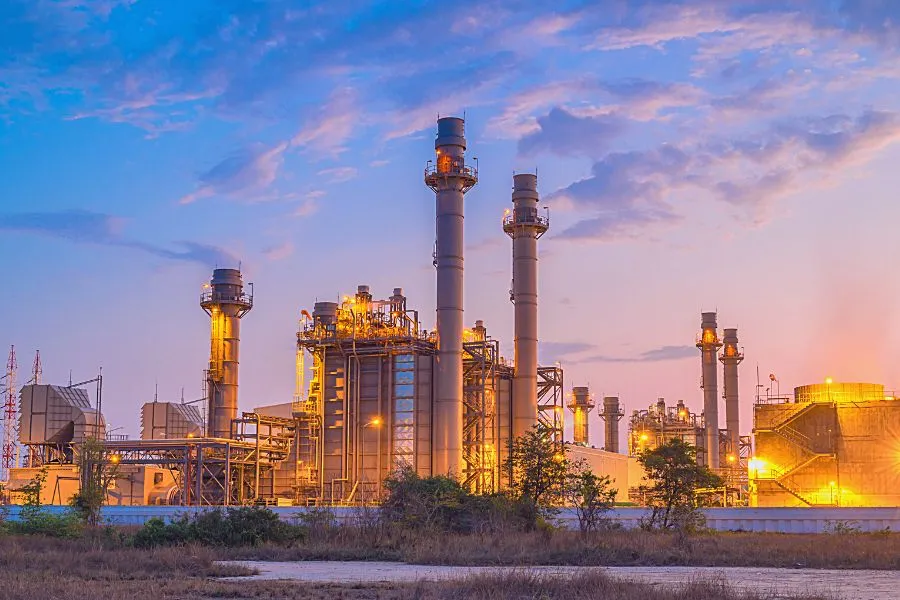As an important energy country in North Africa, Libya mainly relies on oil-fired and gas-fired power plants for electricity supply. Meanwhile, power plants in coastal areas often depend on seawater desalination systems to ensure production water. However, the operation of power plants in the country has long faced two core challenges: first, pipe corrosion and reduced heat exchange efficiency caused by microbial growth in circulating cooling water treatment; second, incomplete water disinfection after seawater desalination and difficulties in meeting sterilization standards during wastewater reuse. Traditional disinfection methods (such as liquid chlorine transportation and storage) are plagued by high transportation costs and significant safety risks due to Libya's complex geographical environment. In contrast, electrochlorination technology, with its characteristics of "on-site production, safety and high efficiency", has gradually become the preferred solution for Libyan power plants to address water treatment challenges.

1. Core Principle and Adaptability of Electrochlorination Technology
Electrochlorination technology converts chloride ions (Cl⁻) into sodium hypochlorite (NaClO) — a highly effective and stable oxidant — through electrolyzing brine (NaCl solution) in a dedicated electrolytic cell using inert electrodes (e.g., ruthenium-coated titanium electrodes). Its core reaction formula is: 2NaCl + 2H₂O → 2NaOH + Cl₂ + H₂. The generated Cl₂ further reacts with NaOH to form NaClO, eventually producing a sodium hypochlorite solution with controllable concentration (usually 0.8%-1.2%), which can be directly used for water disinfection and scale removal.
In terms of adaptability to Libyan power plants, this technology has three major advantages: first, raw materials are easily available — salt and fresh water (or desalinated seawater) are locally accessible, eliminating the need for long-distance transportation; second, flexible operation — the output of sodium hypochlorite can be precisely controlled by adjusting current and brine concentration, adapting to the water treatment needs of power plants at different periods (e.g., peak and off-peak electricity consumption); third, environmental friendliness — it produces no harmful by-products (such as liquid chlorine leakage risks), complying with Libya's recent requirements for industrial environmental protection upgrades.
2. Specific Application Scenarios of Electrochlorination Technology in Libyan Power Plants
(1) Circulating Cooling Water Treatment: Corrosion Prevention and Efficiency Improvement
Most power plants in Libya adopt open circulating cooling systems. Under high-temperature and arid conditions, algae and bacteria (e.g., sulfate-reducing bacteria) in the cooling water tend to multiply rapidly, forming biological slime that adheres to the inner walls of heat exchange tubes. This leads to a 10%-20% reduction in heat exchange efficiency and accelerates pipe corrosion. After a coastal power plant (near Tripoli) introduced electrochlorination technology, sodium hypochlorite solution was dosed at the circulating water inlet to control the residual chlorine concentration in the water at 0.2-0.5mg/L. As a result, the total number of microorganisms decreased by over 90%, the amount of biological slime adhesion reduced by 85%, and the corrosion rate of heat exchange tubes dropped from 0.2 mm/year to 0.05 mm/year. This saves the power plant approximately 300,000 US dollars annually in pipe replacement and energy loss costs.
(2) Supporting Disinfection for Seawater Desalination: Ensuring Water Quality Safety
Production water for coastal power plants in Libya (e.g., Benghazi Power Plant) mostly comes from seawater desalination systems. However, desalinated water must undergo strict disinfection to remove residual microorganisms before being used for boiler feedwater or circulating systems. When traditional liquid chlorine disinfection was used, liquid chlorine storage tanks often faced supply interruptions due to local transportation constraints. In contrast, electrochlorination technology can be linked with seawater desalination systems: low-salinity desalinated water is used to produce sodium hypochlorite, which is directly injected into desalinated water storage tanks. This increases disinfection efficiency by 30%, raises the water quality compliance rate from 85% to 99%, and avoids boiler shutdown risks caused by water quality issues.
(3) Power Plant Wastewater Reuse: Achieving Cost Reduction and Water Conservation
Inland power plants in Libya (e.g., Sabha Power Plant) face fresh water shortages, making wastewater reuse (e.g., circulating water discharge, domestic sewage) a crucial water-saving measure. However, wastewater must be thoroughly sterilized before reuse to prevent pollutants from entering the production system. An inland power plant adopted a wastewater reuse process combining "electrochlorination disinfection + filtration". Through electrochlorination technology, the Chemical Oxygen Demand (COD) in wastewater was reduced from 80mg/L to below 30mg/L, and the total number of bacteria was controlled within 100 CFU/mL. The reuse rate increased to 60%, reducing fresh water extraction by approximately 500,000 cubic meters per year and saving over 200,000 US dollars in water costs annually.
3. Advantages, Challenges and Countermeasures of Electrochlorination Technology Application
(1) Core Application Advantages
- High Safety Factor: No need to store high-pressure liquid chlorine, avoiding safety accidents caused by transportation and leakage, which is suitable for the unstable logistics environment in some areas of Libya;
- Low Operation and Maintenance Costs: Compared with liquid chlorine disinfection, the annual operation and maintenance cost of electrochlorination technology is reduced by 25%-35%, and the equipment service life can reach 8-10 years, showing significant long-term economic benefits;
- Adaptability to Extreme Environments: Targeting Libya's high-temperature climate (maximum temperature over 45℃ in summer) and high sand and dust levels, dedicated electrochlorination equipment can be equipped with dust-proof and heat-dissipating modules to ensure stable operation.
(2) Existing Challenges and Countermeasures
- Impact of High-Temperature Environments on Electrolysis Efficiency: High temperatures in summer may increase the temperature of electrolytic cells, reducing the efficiency of sodium hypochlorite production. Countermeasure: Install cooling devices (e.g., plate heat exchangers) in the electrolysis system to control the temperature of electrolytic cells at 25-35℃, ensuring stable electrolysis efficiency;
- Insufficient Operational Capabilities of Technical Personnel: Local technical personnel in Libyan power plants have limited experience in maintaining electrochlorination equipment. Countermeasure: Collaborate with equipment suppliers to carry out "localized training", establish a regular inspection mechanism, and build a remote monitoring platform to real-time monitor equipment operating parameters and troubleshoot in a timely manner;
- Stability of Raw Material Supply: Some remote power plants face risks of delayed salt procurement. Countermeasure: Sign long-term supply agreements with local chemical enterprises and establish a 1-2-month salt reserve in power plants to ensure continuous raw material supply.
With Libya's promotion of "high efficiency and environmental protection" in the power industry and the gradual application of renewable energy (e.g., solar energy) in power plants, electrochlorination technology will embrace broader application prospects. On the one hand, solar power generation can be linked with electrochlorination equipment to produce sodium hypochlorite using photovoltaic power, further reducing operating costs; on the other hand, future large-scale combined cycle power plants (e.g., Sirte Power Plant Expansion Project) can integrate electrochlorination technology into the overall water treatment plan to achieve full-process optimization of "disinfection - scale removal - wastewater reuse".
Chlory Company has long been committed to the development and application of electrochlorination technology. With its characteristics of safety, high efficiency and low cost, electrochlorination technology not only solves the water treatment pain points of Libyan power plants but also aligns with the sustainable development needs of the country's power industry, promising to become the mainstream water treatment technology for Libyan power plants in the future.
Chlory's electrochlorination technology has been successfully implemented and applied in power plants in many countries, including Thailand, Vietnam, Brazil, Mexico, the United States, and Canada. Relying on its significant technical advantages and stable operating performance, it has won wide acclaim from end users.
